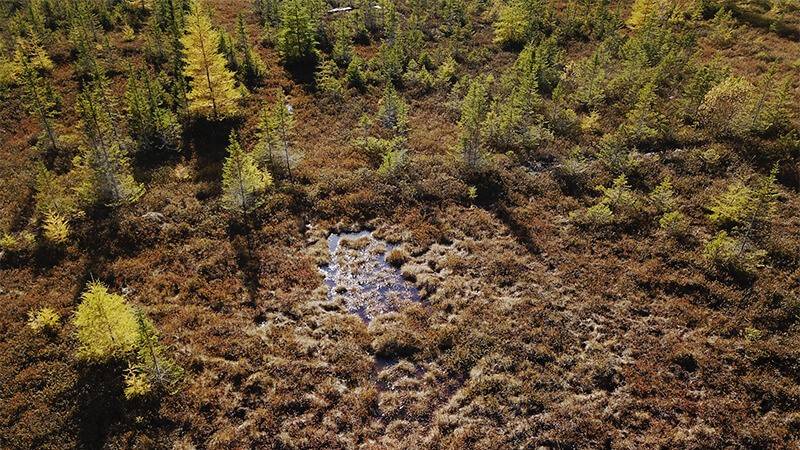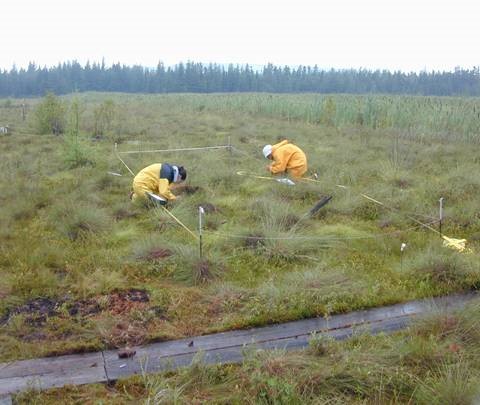Peat Moss: A Sustainable Component of Growing Media


Reintroduction of live Sphagnum peat moss to a bog that is being restored in Rivière-du-Loup, Quebec. Source: Premier Tech
Peat bogs were formed thousands of years ago after the last receding ice age. As peat bogs continue in their evolution, mosses and other plant debris slowly accumulate in thick deposits. In Canada, peatlands cover 280 million acres (113.6 million hectares), or 13% of the land area of Canada. Of this, less than 74,000 acres (30,000 hectares), or 0.03% of the total peatland area, is harvested for growing media.
In Canada and many European countries that harvest peat moss, guidelines have been established with environmental protection and conservation groups for the harvesting and preservation of peat bogs.
Why Should Peat Moss Be a Sustainable Component?
Sphagnum peat moss is unique in that it simultaneously grows and dies, leaving behind what we call peat moss. Peat moss is the accumulation of dead organic material from partly decayed leaves, stems and roots of various mosses and other plants that have accumulated in a water-saturated environment in the absence of oxygen. This plant material breaks down very slowly, so peat accumulates in layers, year after year, forming a deposit which can be up to 65 feet (20 meters) thick. In places where peat is harvested, other sections of the peat bog continue to grow.
Peat is also an accumulator of carbon that is sequestered from the atmosphere. Peatlands contain roughly 30% of all the carbon found on land, worldwide. Although only 0.03% of the peatland area is harvested for horticultural purposes, it’s important to manage these sites in a responsible way, so they will be around for many generations and continue storing carbon from the atmosphere.
What are the other functions of peatlands?
Peatlands have more than just carbon storage functions. They can harbor an important variety of plants and animals that play an important role in this ecosystem and in the food chain. Peatlands are also 90% water and act as vast water reservoirs, contributing to the future environmental security of humans and ecosystems.

The Canadian Sphagnum Peat Moss Association, which represents the peat moss industry, has been investing millions of dollars in an Industrial Research Chair in Peatland Management, who is working with environmental agencies and government officials to develop sustainable practices to maintain this valuable resource. The research team is headed by Dr. Line Rochefort of Université Laval (Quebec, Canada). Since 1992, this research group has led many projects, including:
- The development of bog restoration techniques for peat bogs that are no longer harvested;
- Natural plant recolonization after harvesting;
- Understanding the hydrology, geochemistry and microbiology of natural, harvested and restored peatlands;
- Developing peatland conservation strategies;
- Determining and establishing populations of arthropods, amphibians, birds, and mammals in restored peatlands;
- Sphagnum peat moss ecology and productivity.
All this research has provided sustainable peat harvesting techniques, peat bog management and procedures for closing and restoring peat bogs. These methods are used and respected by all peat industry stakeholders, so the peat industry does its part to contribute to the long-term viability of these ecosystems.
As a result, strict procedures are now used when opening a peat bog and preparing it for harvesting. Once vegetation is removed from a virgin bog, the peat bog surface is exposed to reveal the live Sphagnum moss. The live moss is removed and relocated to other sections of peat bogs that are in the process of being reclaimed.
The live Sphagnum moss will begin to establish and grow, allowing the ecosystem to be restored to a fully sustainable peat bog within a couple of years. Once again, a restored peat bog will be as effective as natural peatlands for sequestering carbon and supporting animal and plant populations that inhabit these ecosystems.
References:
- Peatlands. Do you care? 2005. Coordinating Committee for Global Action on Peatlands
- Peatland Ecology Research Group (PERG) of Université Laval http://www.gret-perg.ulaval.ca/no_cache/en/pergs-publications/?tx_centrerecherche_pi1[showUid]=6038
- Strack, M., Zuback, Y. 2013. Annual carbon balance of a peatland 10 yr following restoration. Biogeosciences, 10: 2885-2896, doi:10.5194/bg-10-2885-2013.